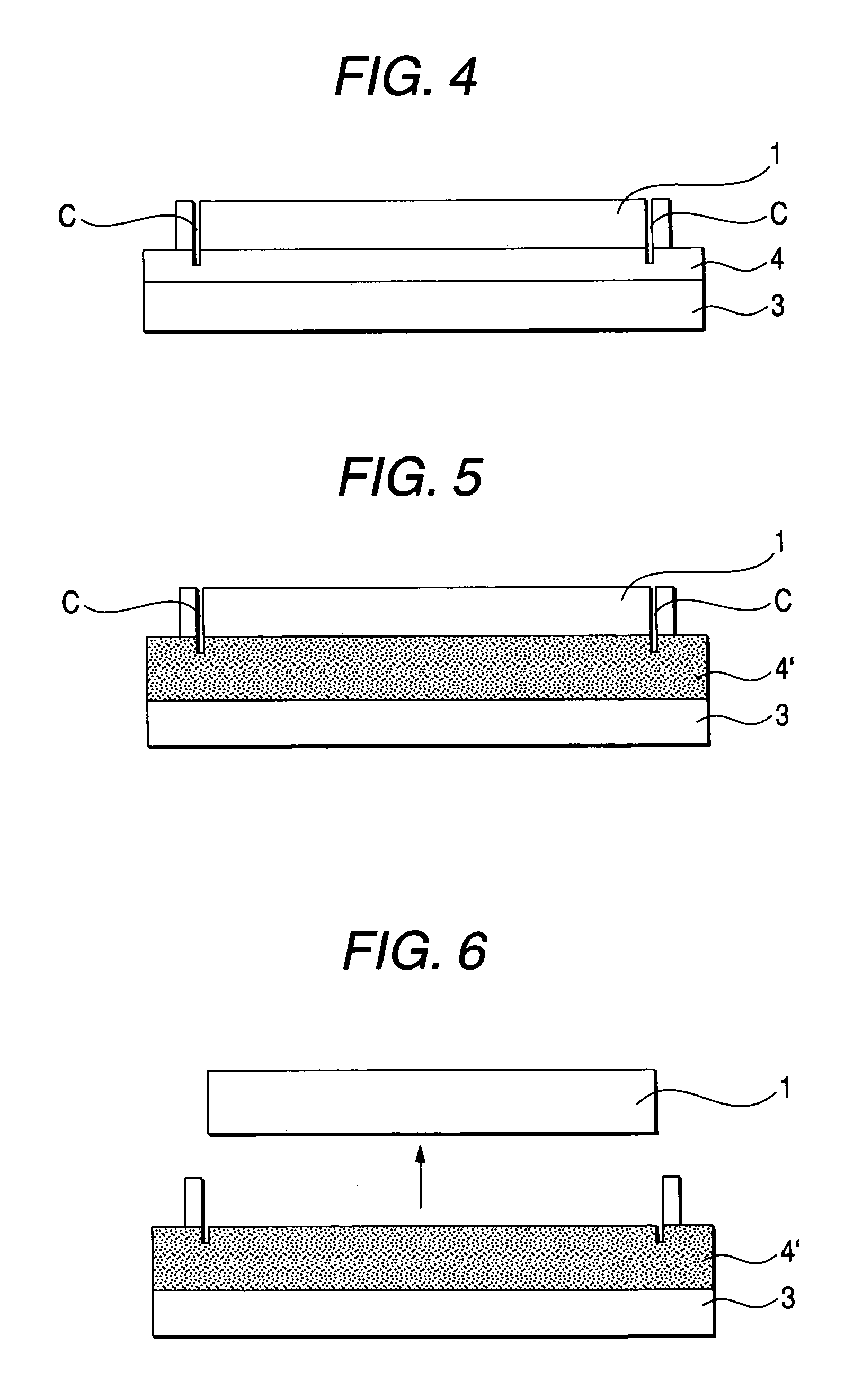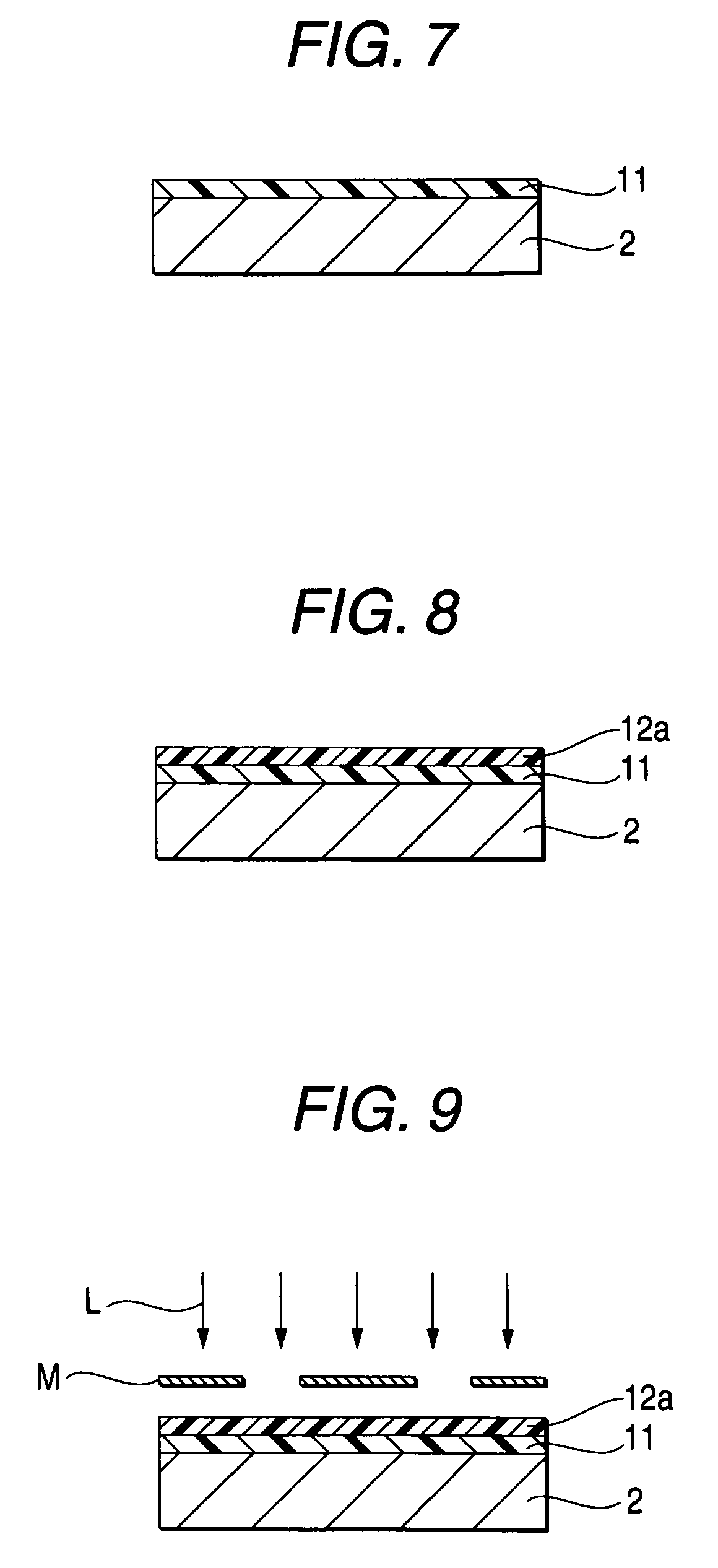Process for producing flexible optical waveguide
a flexible, optical waveguide technology, applied in the direction of optical waveguide light guide, instruments, optics, etc., can solve the problems of distorted cut surface, troublesome light transmission, danger, etc., and achieve enhanced adhesion, easy peeling, and poor adhesion.
- Summary
- Abstract
- Description
- Claims
- Application Information
AI Technical Summary
Benefits of technology
Problems solved by technology
Method used
Image
Examples
example
Poly(Amic Acid) Solution
[0063]In a 500-mL separable flask equipped with a stirrer, 26.66 g (0.06 mol) of 2,2-bis(3,4-dicarboxyphenyl)hexafluoropropane dianhydride (6FDA) as an acid dianhydride and 18.54 g (0.058 mol) of 2,2′-bis(trifluoromethyl)benzidine (BTFB) were dissolved in 182.85 g (2.10 mol) of N,N-dimethylacetamide (DMAC) as an organic solvent. Thereafter, the resultant solution was stirred at room temperature (25° C.) for 10 hours to thereby produce a poly(amic acid) solution (polyimide resin precursor solution).
[0064]Subsequently, the poly(amic acid) solution was applied on a 525 μm-thick silicon wafer substrate by spin coating in such an amount as to result in a thickness after heat treatment of 15 μm. The solution applied was dried at 90° C. to thereby form a resin layer comprising a polyimide resin precursor composition. Thereafter, the resin layer was heated at 385° C. under vacuum to thereby complete removal of the solvent remaining in the resin film and imidization o...
PUM
 Login to View More
Login to View More Abstract
Description
Claims
Application Information
 Login to View More
Login to View More - R&D
- Intellectual Property
- Life Sciences
- Materials
- Tech Scout
- Unparalleled Data Quality
- Higher Quality Content
- 60% Fewer Hallucinations
Browse by: Latest US Patents, China's latest patents, Technical Efficacy Thesaurus, Application Domain, Technology Topic, Popular Technical Reports.
© 2025 PatSnap. All rights reserved.Legal|Privacy policy|Modern Slavery Act Transparency Statement|Sitemap|About US| Contact US: help@patsnap.com



